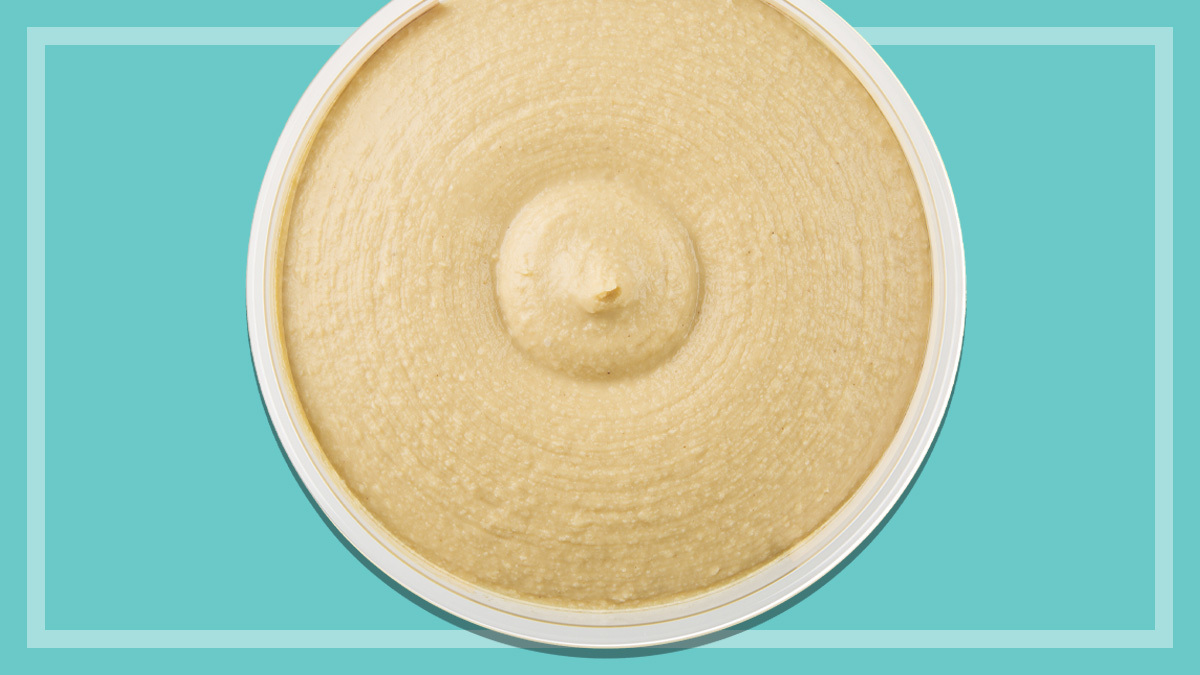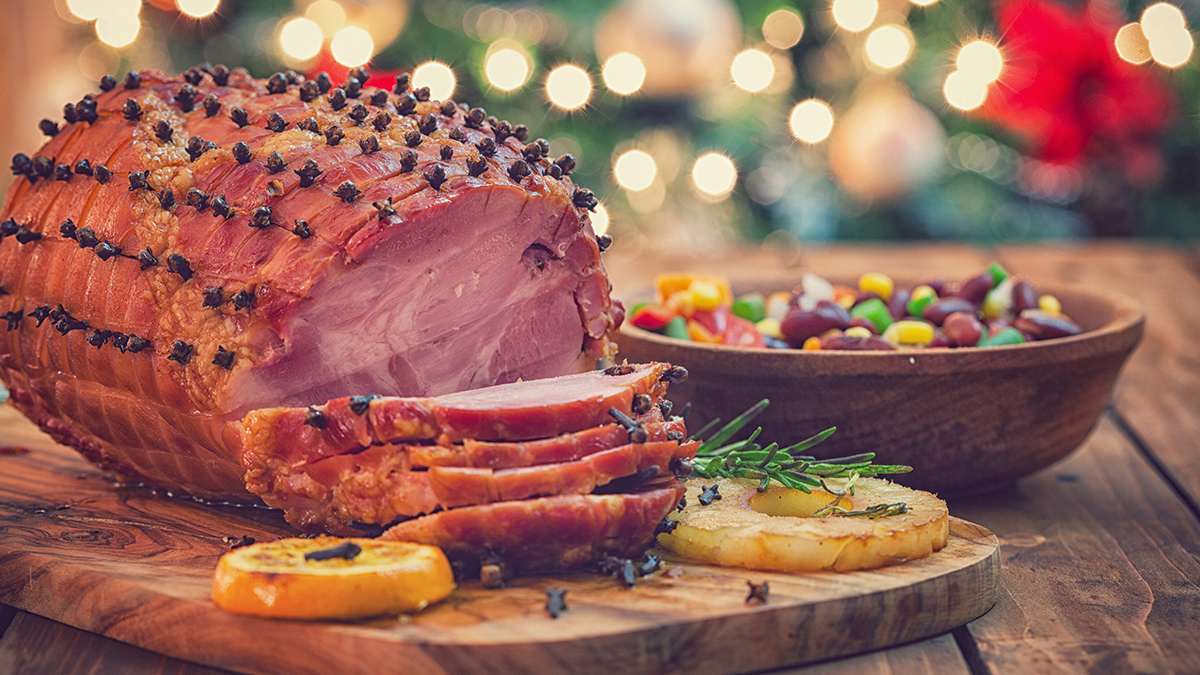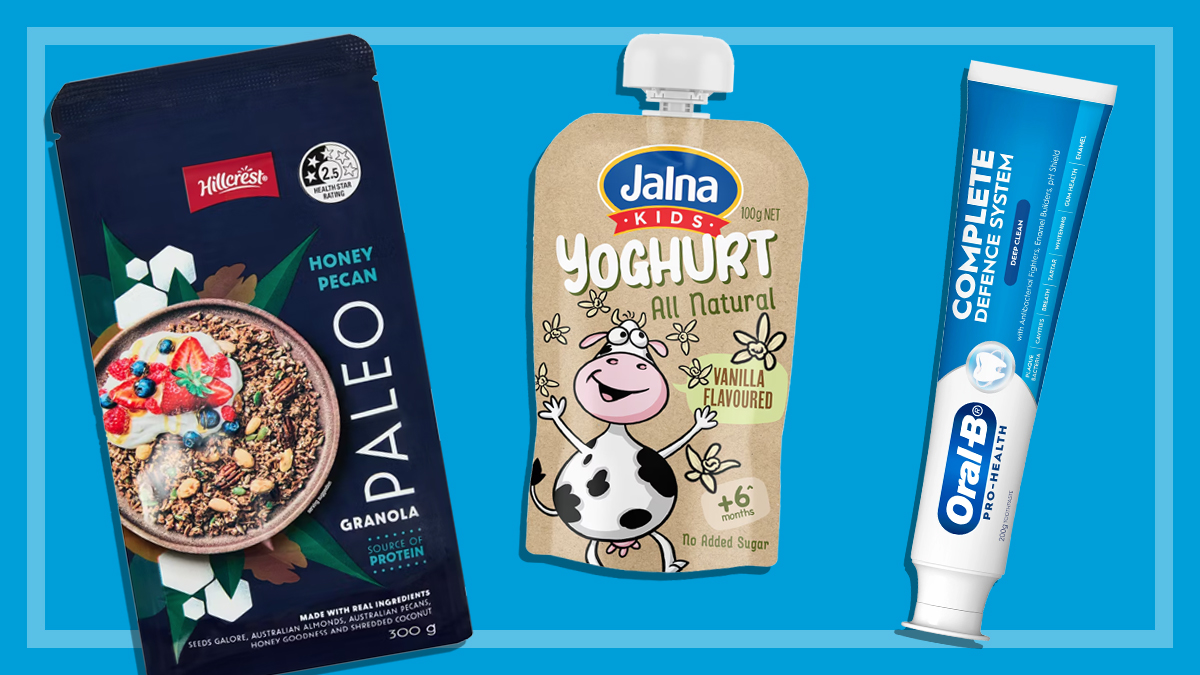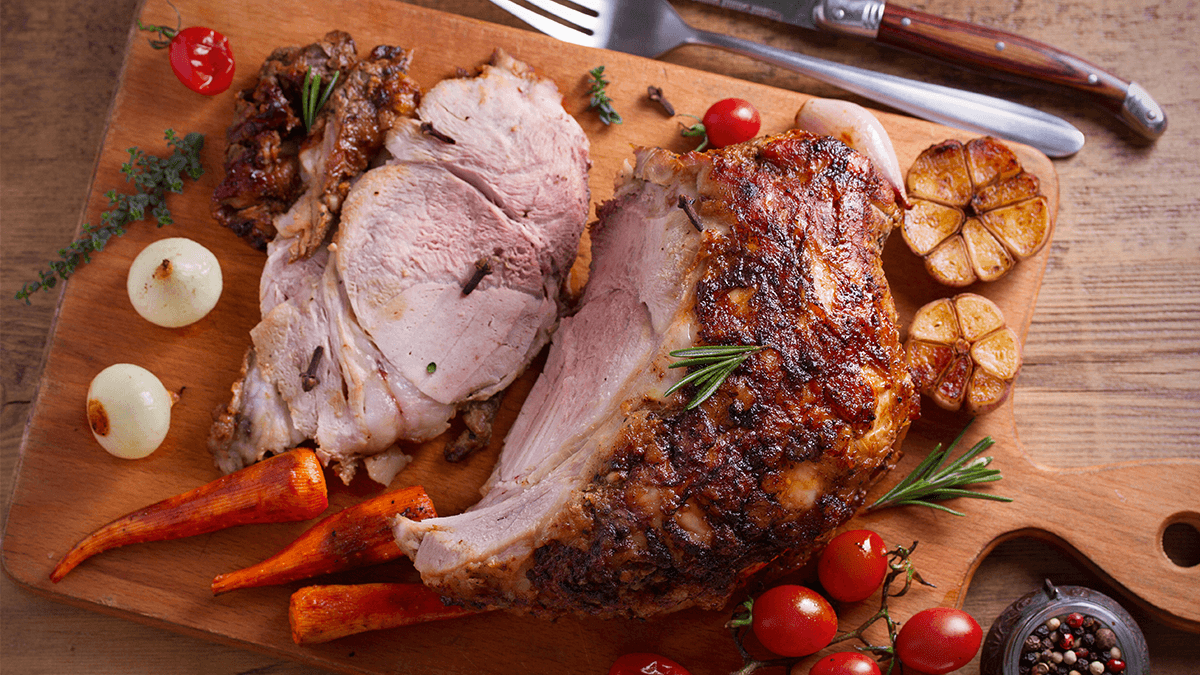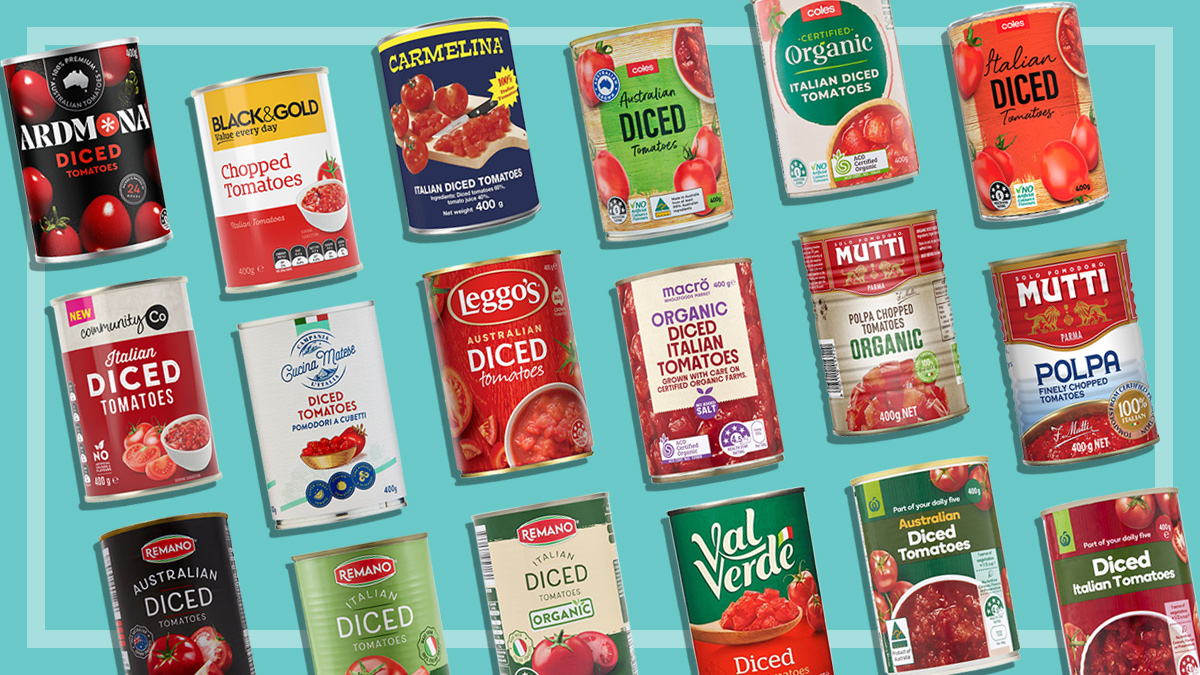Get our independent lab tests, expert reviews and honest advice.
What’s the best hummus?
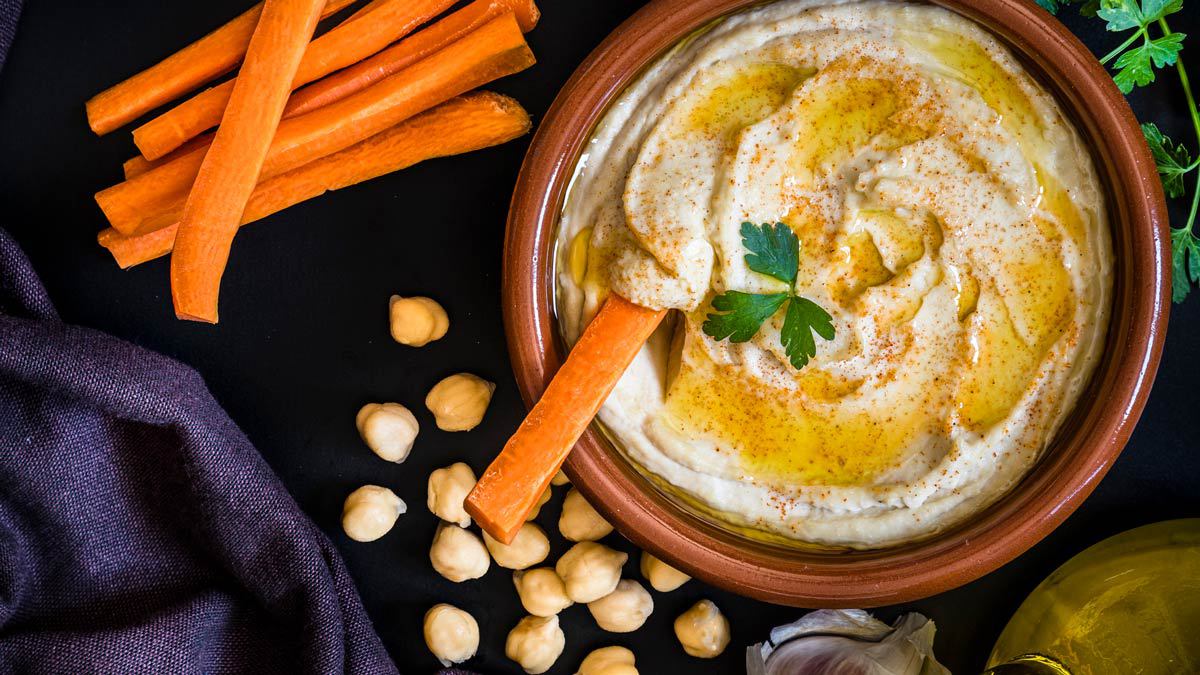
It’s handy to have a dip or two in the fridge ready for picnics and barbecues, or to whip out when friends drop by. Hummus is one of the most popular types around, but choosing a good one can be a bit of a, well, lucky dip.
On this page:
- Which hummus is best?
- Is hummus healthy?
- What makes a good (or bad) hummus?
- Hummus recipe
- Meet our expert judges
- How we test
If you’re feeling adventurous, you can buy hummus in a range of intriguing flavour combinations – from roasted pumpkin or beetroot through to those garnished with caramelised onion, roasted capsicum or jalapeño.
‘Chickpeas with tahini’
But, traditionally, hummus is a combination of just two core ingredients: chickpeas and tahini (sesame seed paste). The name hummus is short for the Arabic term hummu࣭s bi tahina, literally ‘chickpeas with tahini’ – usually with added lemon juice and salt for seasoning. Store-bought hummus products typically contain garlic and oil as well.
So which one should you be putting on the platter with your crackers and vegie sticks? With a focus on the more ‘classic’ or ‘traditional’ versions, we considered the nutrition and taste of 27 hummus products to find the best.
Which hummus is best?
The recipes of the products we tested were numerous and varied, so it’s perhaps not surprising that their scores also varied widely.
The different types, quantities and quality of ingredients affect both nutrition and taste. The way the hummus is produced can have an impact on the final product, too.
In fact, our judges had a number of criticisms of the product category more generally – see What makes a good (or bad) hummus?
But a handful of products performed better than the rest, and we’ve recommended those that achieved a CHOICE Expert Rating of 70% or more.
The six products in that list, in descending order of CHOICE Expert Rating, are:
- Aldi Deli Originals Fresh Traditional Style Hommus with Chickpeas & Tahini – 78%
- Black Swan Hommus – 76%
- Monjay Mezza Hummos Dip – 73%
- Copperpot Hommus – 71%
- Obela Hommus Classic – 71%
- Dari’s Table Mediterranean Hummus – 70%
Of these, the following product was a standout.
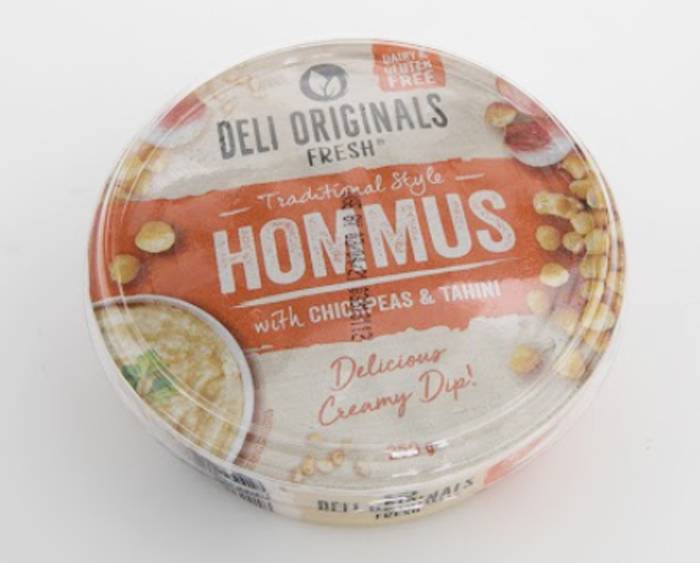
Aldi Deli Originals Fresh Traditional Style Hommus
- CHOICE Expert Rating: 78%
- Price: $1.99 for 250g pack ($0.80 per 100g)
- Country of origin statement: Made in Australia from at least 85% Australian ingredients
- Need to know: This product received the highest taste score of all the products in the test – and is also the cheapest
For the full results of all 27 products tested see our hummus review.
Is hummus healthy?
As dips go, yes, hummus is probably one of the healthiest options, as its core ingredients are extremely nutritious.
Chickpeas are high in protein, a great source of fibre and are rich in minerals and vitamins, including iron and folate. The amount used to make hummus can vary – the chickpea content of the products we tested ranged from just 34% up to 86%.
Sesame seeds are also a great source of protein and fibre, a decent source of magnesium and calcium, and are also rich in good-for-you unsaturated fats.
The tahini (sesame seed paste) content of the hummus products we tested ranged from zero percent (Fifya Hommus Natural & Healthy Sesame Free) up to 25% (Obela Middle Eastern Restaurant Style Hommus, marketed as “made with extra tahini”).
And hummus more generally contains very little sugar and isn’t too high in salt either.
If you’re looking for a hummus that’s as nutritious as it is delicious, think about the following:
Fat
The fat content of hummus largely depends on how much tahini and oil it contains, and ranged from 4.5g up to 32g per 100g in the products we tested.
But the fat is generally of the healthy, monounsaturated varieties (the possible exceptions being the products that list “vegetable oil” rather than specifying a type, which may contain palm oil or coconut oil, which are both high in saturated fat).
Four products in our test don’t include oil as an ingredient – SSS Foods Hommus Natural, Coles Deli Hommus Dip, Harris Farm Dip Hommus Plain 50% Less Salt and Harris Farm Dip Hommus Plain – but the latter three were among the lowest scoring.
Sodium
Hummus tends not to be high in sodium, but a couple of the products we tested are particularly salty – Yalla Hummus and Harris Farm Dip Hommus Plain, which both have a sodium content of more than 600mg per 100g.
Harris Farm has a reduced-salt option (Harris Farm Dip Hommus Plain 50% Less Salt), but the least salty hummus we tested is Monjay Mezza Hummos Dip (one of our Recommended products), which has just 153mg sodium per 100g.
What makes a good (or bad) hummus?
According to our expert judges, a good hummus has a number of key characteristics. It should have:
- a smooth, creamy, velvety texture, with no lumps
- an excellent balance between the ingredients, particularly between the chickpeas and tahini
- a nutty profile with citrus highlights.
Criticisms of the category more broadly included:
- The flavour profile of many products wasn’t ‘authentic’ or balanced. According to our experts, you should predominantly be tasting chickpeas, tahini and lemon juice – and not getting a huge hit of garlic, for example. Interestingly, only about half the products we tested contain lemon juice, and all but a couple contain garlic.
- The texture was often chewy due to the presence of chickpea skins.
- Many tasted quite sweet, which connoisseurs say isn’t true to hummus.
- Many were very acidic, probably because of too much citric acid and/or vinegar. Where products actually contained lemon juice, in most cases it was in combination with vinegar and/or citric acid. The rest contain just vinegar and/or citric acid (sometimes with other acidity regulators).
- Some had a bitter aftertaste.
- Some had fishy flavour overtones, which can be the case when they’re made with canola oil. The majority of the products we tested are made with oil, mainly canola, but also extra virgin olive oil or just “vegetable oil”.
- Some had a rancid taste, which according to our experts can be a result of a poor-quality oil being used in production, or even the production techniques themselves.
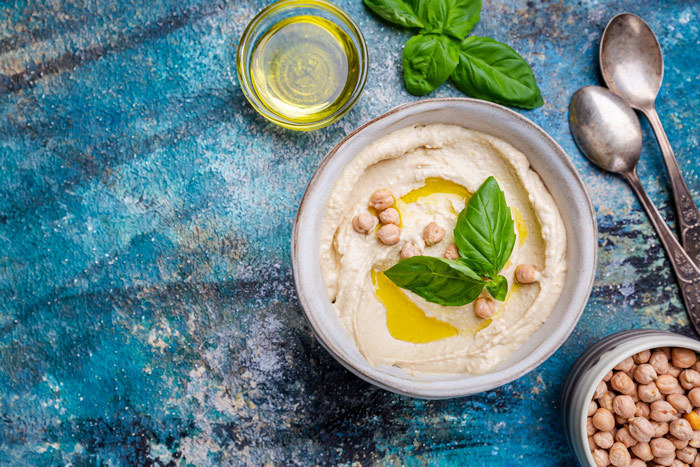
Hummus recipe
Want to know how to make hummus at home? Fiona Mair, CHOICE home economist, shares her recipe for delicious, smooth and creamy homemade hummus. All you need is a handful of ingredients and a food processor.
Ingredients
- 1 x 400g can chickpeas, drained and rinsed
- ½ teaspoon baking soda
- ½ garlic clove, peeled and minced
- 2 tablespoons lemon juice (1 lemon)
- ¼ teaspoon salt
- 2 tablespoons ice-cold water
- 1 ½ tablespoons extra virgin olive oil
- ¼ cup tahini, mixed well
- Paprika, pinch
Method
- Place chickpeas and baking soda into a small saucepan and cover with water. Bring to the boil over high heat. Reduce to low heat and simmer, stirring occasionally for about 20 mins until chickpeas are soft.
- Drain chickpeas in a sieve, place in a bowl and fill with cold water. Use your hands to gently rub and stir the chickpeas around the water. This will help release the skins and they will float to the top. Scoop out the skins and discard. Repeat this a few times.
- Place garlic, lemon juice and salt into a small bowl and let the flavours infuse for 10 mins.
- Drain the chickpeas and place into the food processor bowl with the iced water.
- Blend for 10 secs, scrape the sides, then, while the motor is running, pour in the garlic, lemon juice and salt mixture, extra virgin olive oil and tahini.
- Blend for roughly 1 min until the hummus is smooth and creamy. Scrape down the sides halfway through.
- Pour hummus into a serving bowl. Flatten hummus with a spoon, drizzle with a little extra virgin olive oil and sprinkle with paprika.
Tips
- Serve with sliced vegetables, toasted Lebanese bread chips or warm Turkish bread.
- If using a large food processor bowl, you may need to double the quantities.
- Add toppings such as a sprinkle of chilli powder, cumin, toasted pine nuts or walnuts, or a sprinkle of dukkah.
- Hummus can be stored in the refrigerator in an airtight container for up to a week.
- Keep the liquid you drain from the can of chickpeas and use it as an egg replacer in recipes. This liquid – called aquafaba – contains a mix of starch and trace amounts of protein, and has similar emulsifying, binding and thickening properties. As a rule of thumb, one tablespoon of aquafaba equals one egg yolk, two tablespoons equals one egg white, and three tablespoons equals one whole egg.
Meet our expert judges
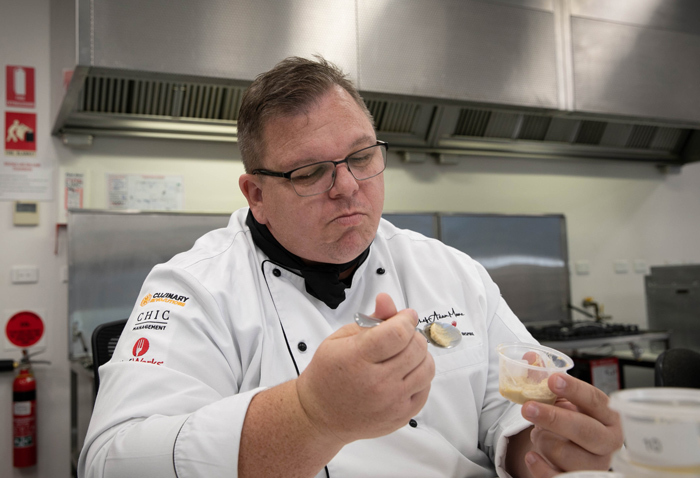
Adam Moore is a prolific culinary judge. His credits include judging for Le Cordon Bleu cooking school and Royal Agricultural Society (RAS) Fine Food competitions across a range of categories.
He has formal qualifications in pastry, charcuterie and butchery, sensory evaluation, food styling and food photography. With more than 25 years in the industry, he has worked in restaurants, food service, retail, food manufacturing, marketing and sales. He’s a certified global executive chef, and culinology director at Culinary Revolutions.

Apoorva Kunte is an innovative and award-winning chef with more than 16 years’ experience working across three continents for five-star hotel chains such as Sheraton Grand, Ritz Carlton and Taj Hotels. He enjoys showcasing local produce teamed up with unusual ingredients, and has created dishes to serve heads of states, celebrities and true-blue foodies.
Apoorva has been published in international publications including GQ, Travel and Leisure, Times of India and Indian Express, and has judged culinary competitions for Le Cordon Bleu. Apoorva is executive sous chef for Marriott International.
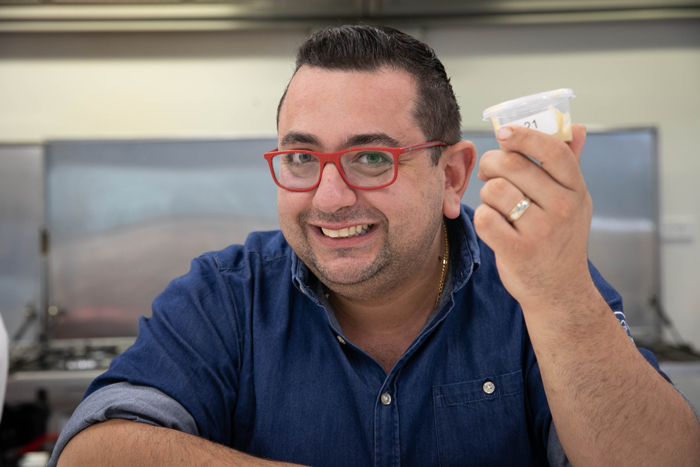
Daniel Abou-Chedid has more than a decade of experience as a professional chef and consultant within the food industry, building on a strong family background in the food industry. A trained chef, Daniel has been a cooking ambassador for kitchen appliance brands, delivered live culinary demonstrations across Australia for companies including Domayne and Westfield, and made guest appearances as a chef for P&O Cruises.
As well as his consulting work, Daniel runs the onsite catering business Fork n’ Knife, which he established, as well as Gosford eatery At Baker Street.
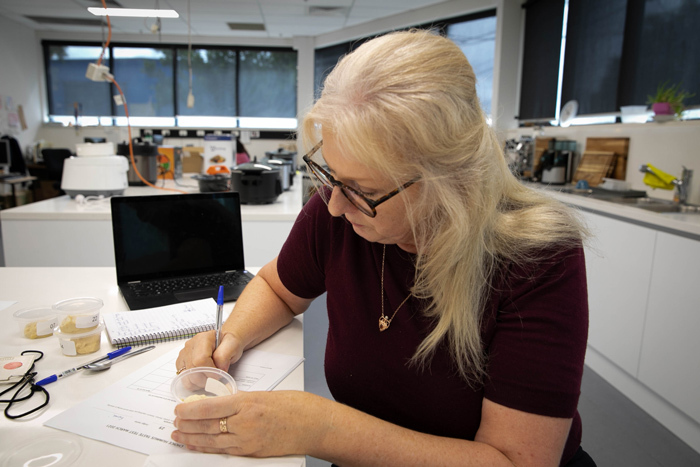
Fiona Mair has cooked more than 8000 scones, 4000 chickens, 3000 sausages, 1000 meringues and 500 pizzas in order to test more than 3000 appliances in the years she’s worked at CHOICE as a test coordinator. She develops the recipes for testing kitchen appliances, helps carry out food taste tests, and has judged coffee in the testing of coffee machines.
Fiona has a finely tuned palate and has been on the judging panel for a number of food taste tests for CHOICE, including strawberry jam and pesto.

Matt Wills is a qualified chef, who has trained and staged in some of the top restaurants in the world including Osteria Francescana. In 2020 he competed in the 2020 culinary Olympics representing Australia.
Matt has judged many cooking competitions around Sydney at both national and regional levels. He is head of food services at the Red Food Company.
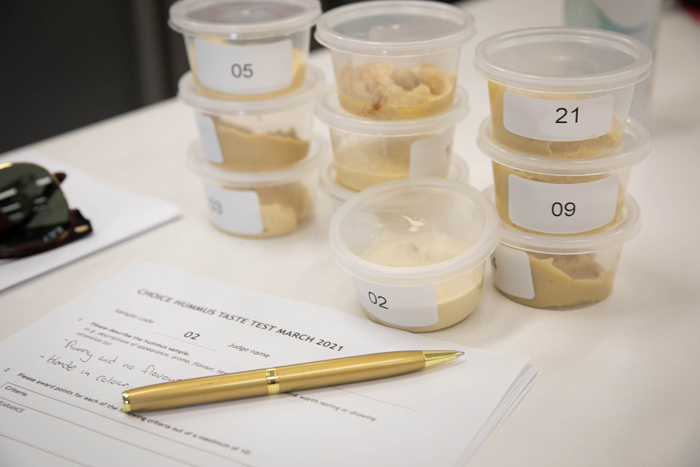
How we test
Products
We test hummus products that are available in major supermarket and grocery chains. We focus on ‘classic’ or ‘traditional’ versions and exclude hummus products made from more unusual flavour combinations.
Price is based on a 200g tub (or closest) bought in Sydney stores (not on special).
Tasting
Hummus samples are put into coded containers immediately before the test. Our experts taste the hummus samples ‘blind’ (without knowing the brands) and in a randomised order, which is different for each expert.
Scores
Experts independently judge all hummus products, scoring each sample for appearance, aroma, texture and flavour.
The CHOICE Expert Rating is made up of taste 70% (45% flavour, 40% texture, 10% appearance and 5% aroma) and nutrition 30% (based on the product’s Health Star Rating, calculated from the details in the nutrition information panel and converted to a percentage).
We recommend hummus with a CHOICE Expert Rating of 70% or more.
The six best tasting store-bought hummus products compared
CHOICE Expert Rating:
- Aldi Deli Originals Fresh Traditional Style Hommus 78%
- Black Swan Hommus 76%
- Monjay Mezza Hummos Dip 73%
- Copperpot Hommus 71%
- Obela Hommus Classic 71%
- Dari’s Table Mediterranean Hummus 70%
Price per 100g ($)
- Aldi Deli Originals Fresh Traditional Style Hommus $0.80
- Black Swan Hommus $1.75
- Monjay Mezza Hummos Dip $1.72
- Copperpot Hommus $1.75
- Obela Hommus Classic $2
- Dari’s Table Mediterranean Hummus $2.50
Energy per 100g (kJ)
- Aldi Deli Originals Fresh Traditional Style Hommus 1380kJ
- Black Swan Hommus 1350kJ
- Monjay Mezza Hummos Dip 1020kJ
- Copperpot Hommus 926kJ
- Obela Hommus Classic 1100kJ
- Dari’s Table Mediterranean Hummus 866kJ
Protein per 100g (g)
- Aldi Deli Originals Fresh Traditional Style Hommus 7.1g
- Black Swan Hommus 6.4g
- Monjay Mezza Hummos Dip 4.9g
- Copperpot Hommus 6.4g
- Obela Hommus Classic 8g
- Dari’s Table Mediterranean Hummus 8g
Saturated fat per 100g (g)
- Aldi Deli Originals Fresh Traditional Style Hommus 3.4g
- Black Swan Hommus 2.4g
- Monjay Mezza Hummos Dip 1.7g
- Copperpot Hommus 1.6g
- Obela Hommus Classic 2.3g
- Dari’s Table Mediterranean Hummus 2.1g
Sodium per 100g (mg)
- Aldi Deli Originals Fresh Traditional Style Hommus 386mg
- Black Swan Hommus 394mg
- Monjay Mezza Hummos Dip 153mg
- Copperpot Hommus 308mg
- Obela Hommus Classic 484mg
- Dari’s Table Mediterranean Hummus 442mg

